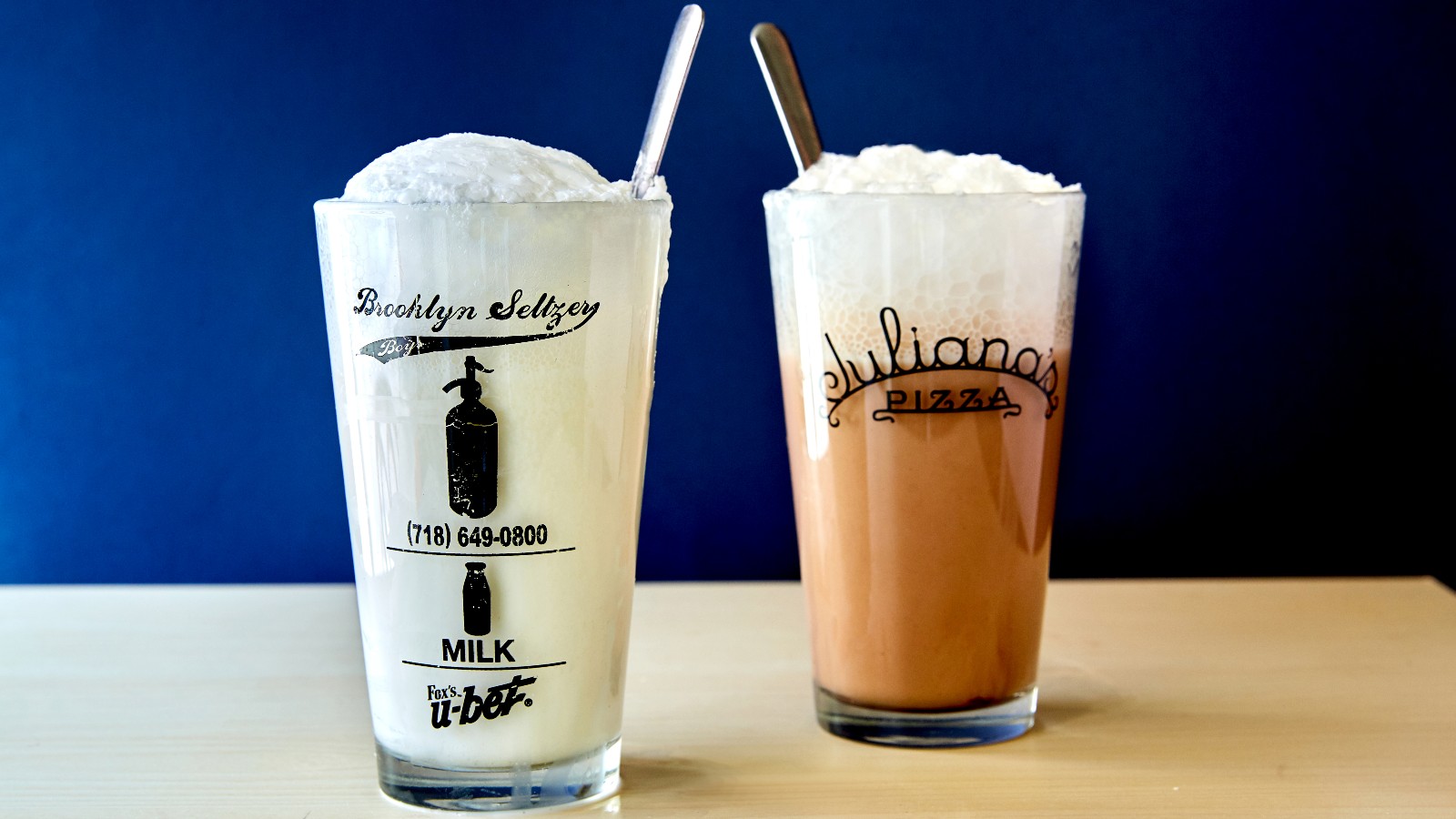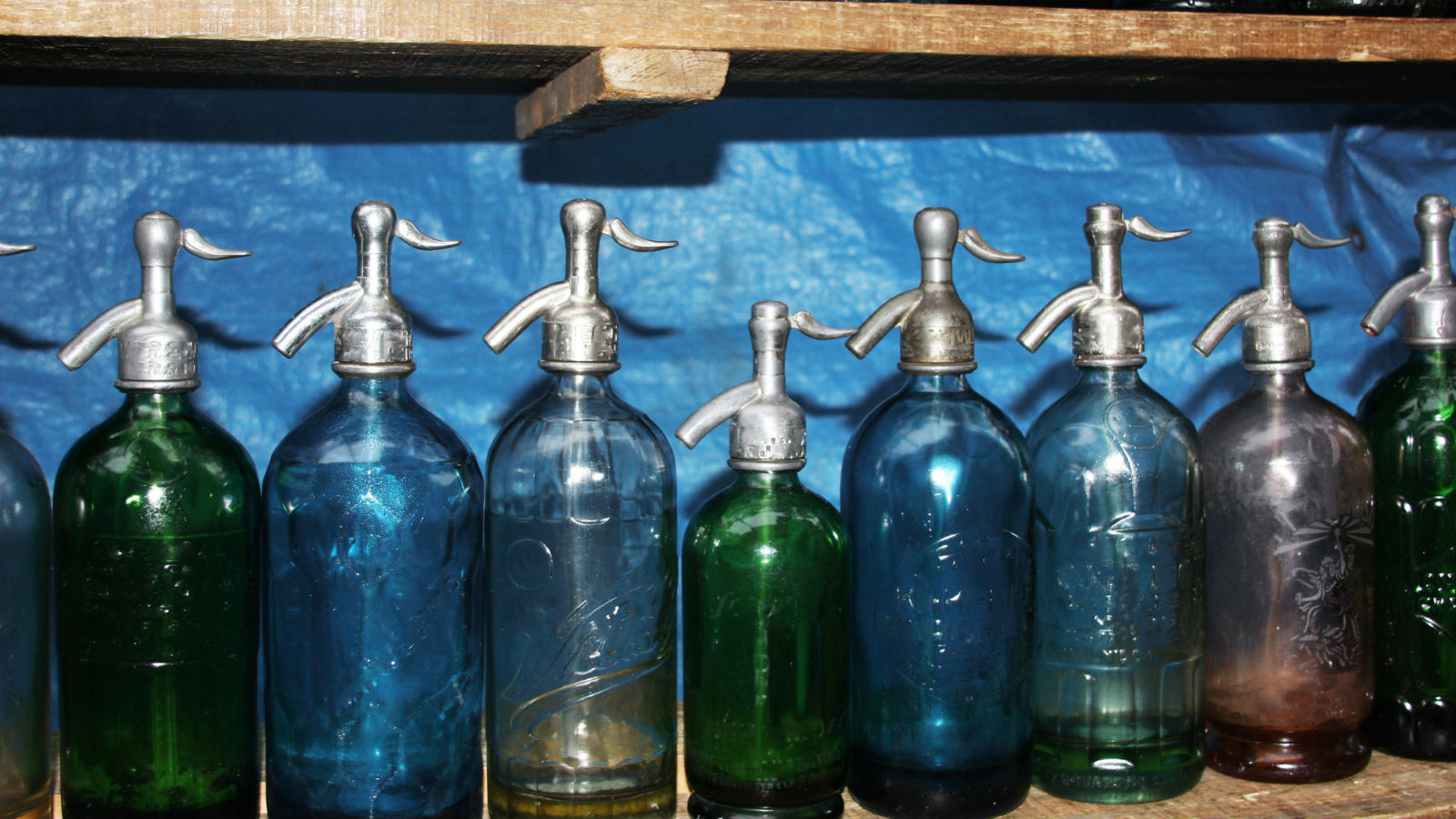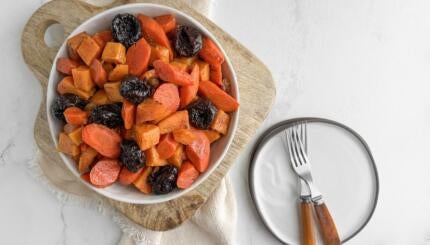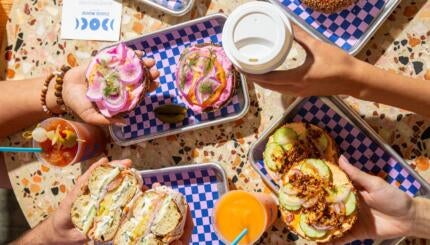Growing up in Skokie, a suburb of Chicago, Sue (Shyman) Fishbain drank her fair share of chocolate phosphates. Her family would go out for dinner at a local Jewish deli where they would order water or pop, the Midwest term for sweetened carbonated beverages, but Sue only had eyes for the phosphate.
“It’s just like chocolate pop because it’s fizzy,” she told The Nosher. Her husband, Michael, who is from Chicago, remembers seeing phosphates on the menu of the corner pharmacies when he was in high school several decades ago.
While chocolate phosphates were a beloved part of Sue’s childhood (Michael wasn’t a fan), many born and raised New Yorkers who were polled for this article had never heard of them.
Joan Nathan, author of the landmark cookbook “Jewish Cooking in America” (1994) says there is a clear geographic divide on who drinks what: “New York Jews,” she wrote, “drank egg creams. Chicago Jews drank chocolate phosphates.”
The Nosher celebrates the traditions and recipes that have brought Jews together for centuries. Donate today to keep The Nosher's stories and recipes accessible to all.

Like its New York cousin the egg cream, the chocolate phosphate is made by combining seltzer and chocolate syrup. But then their paths diverge. The egg cream has milk in it while the phosphate does not. True to its name, the original phosphate was made with phosphoric acid, giving the drink a bit of a tart, but pleasant, taste.
But phosphates today mostly lack the very ingredient that gave it its name. Most places serving chocolate phosphates prepare them using just seltzer and syrup without its namesake phosphoric acid, a product which is available online and in specialty stores, but hardly a household ingredient.
At the turn of the 20th century, though, phosphate sodas with phosphoric acid were all the rage at drugstore soda fountains. They came in a variety of flavors, with lemon, cherry and chocolate being especially popular. And while the flavors were good, current events played a role in their popularity, too.
“Soda fountains became popular in the 1880s at drugstores because they were a meld between healthy drinks and pharmacists,” food historian Dann Woellert told The Nosher. “As you moved into Prohibition from 1919 into the 1930s, the soda fountain became the bar for adults. The chocolate phosphate and fruit-flavored phosphates became the mocktail of the Depression era.”
Food historian Andrew Coe, writing in “The Oxford Companion to American Food and Drink,” wrote that the phosphates’ high point “lasted until the 1930s when ice-cream based concoctions began to dominate the soda fountain.”
If mostly forgotten in much of the country, phosphoric acid is still found wherever Coca-Cola is sold or served. It is one of Coca-Cola’s six ingredients, giving the world’s most popular carbonated soft drink its mildly tangy aftertaste.
Chocolate phosphates may primarily be found today in the Midwest, but they are found in other places, too. In Philadelphia, Franklin Fountain is a recreation of a 1915 ice cream parlor with “Fizzes and Phosphates” on its menu. In 2006, Josh Lebewohl, one of the owners of Second Avenue Deli, a kosher delicatessen in Manhattan, began serving complimentary chocolate phosphates at the end of every meal.
“We called it chocolate shots,” said Lebewohl. “We made it with seltzer and Bosco, because Bosco chocolate syrup is pareve. It was a welcome ‘l’chaim.’ It is fun, it is nice, and it is sweet.”
While the drink was beloved by customers, Lebewohl recently stopped serving it.
He swapped out the end of meal chocolate shots for blue-and-white cookies, a riff on New York’s beloved black-and-white cookie as a way of showing support for Israel in the post-October 7th world.
Those who still have chocolate phosphates-sans-phosphates on the menu find other ways to make the drink stand out. Bradley Rubin, the proprietor of Eleven City Diner in Chicago, where you can expect to wait an hour just to get in the door, sells more than 100 chocolate phosphates, what he calls “chocolate phos,” a week.
For Rubin, serving the chocolate phos is a nostalgic labor of love.
“I learned to make a chocolate phos from my father and grandfather in my house,” he told The Nosher, where his family had an antique soda fountain. “Everyone loves them. We serve it with a sidecar with soda, what we call a 2-cent plain.”
Having the sidecar, he said, “allows you to take the long spoon it comes with and mix the chocolate on the bottom of the glass with the soda from the side car. You get a little more chocolate soda. You aren’t popping open a can. The drink becomes yours.”
“We are a chocolate phos town,” continued Rubin. “This is what we do in Chicago.”

But the question remains: Is chocolate phosphate a Jewish drink in the way that Manischewitz wine certainly is? It’s true that it is made with seltzer, a beverage seen as Jewish given Jews’ predilection for the bubbly water and their involvement in the seltzer trade. And it’s also pareve, a drink that can be served with meat or dairy, in diners or delis, with cheese blintzes or pastrami sandwiches.
Susan Fishbain never thought of it as a Jewish drink. Nor did Linda Neiman, a Chicago-born lover of chocolate phosphates who drank them in diners and ice cream shops when growing up. In her parents’ era, before World War II, it was very popular among everyone in Chicago, not just Jews.
Barry Joseph, author of “Seltzertopia,” and the co-founder of the Brooklyn Seltzer Museum distinguishes between a Jewish drink and a drink enjoyed by Jews:
“When you ask somebody what’s your favorite Jewish drink, I think some people are answering — what’s your favorite drink as a Jew?” he said. “Which doesn’t mean the drink is inherently Jewish, but it’s something they drank as a Jew.”



